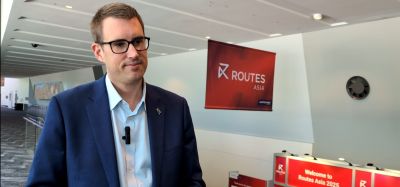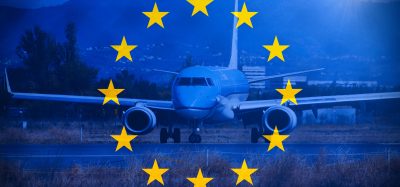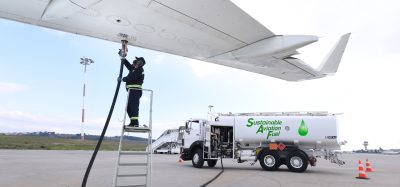Fuel efficiency
- Like
- Digg
- Del
- Tumblr
- VKontakte
- Buffer
- Love This
- Odnoklassniki
- Meneame
- Blogger
- Amazon
- Yahoo Mail
- Gmail
- AOL
- Newsvine
- HackerNews
- Evernote
- MySpace
- Mail.ru
- Viadeo
- Line
- Comments
- Yummly
- SMS
- Viber
- Telegram
- Subscribe
- Skype
- Facebook Messenger
- Kakao
- LiveJournal
- Yammer
- Edgar
- Fintel
- Mix
- Instapaper
- Copy Link
Posted: 3 April 2007 | Juergen Haacker, Director Operations. International Air Transport Association | No comments yet
Conserving fuel is important for two very obvious reasons. First, given the high price of oil, airlines can save considerable sums of money by using less fuel through improved fuel efficiency. Secondly, if an airplane uses less fuel, it will produce lower CO2 emissions. Just a 1% reduction in the average annual fuel burn of a Boeing B737-300 or an Airbus A320 results in 100 tonnes of fuel not burnt, US$50,000 in cost savings to the airlines and 400 tonnes of CO2 not emitted into the atmosphere. This article looks at some of the steps that airlines are taking to improve fuel efficiency and also looks at what airports, governments and other industry partners can do.
Conserving fuel is important for two very obvious reasons. First, given the high price of oil, airlines can save considerable sums of money by using less fuel through improved fuel efficiency. Secondly, if an airplane uses less fuel, it will produce lower CO2 emissions. Just a 1% reduction in the average annual fuel burn of a Boeing B737-300 or an Airbus A320 results in 100 tonnes of fuel not burnt, US$50,000 in cost savings to the airlines and 400 tonnes of CO2 not emitted into the atmosphere. This article looks at some of the steps that airlines are taking to improve fuel efficiency and also looks at what airports, governments and other industry partners can do.
The issue of climate change is at the top of many governments’ agendas. Aviation is often singled out as a major cause of global warming and politicians are quick to grab easy headlines by attacking the aviation industry.
The simple fact is that aircraft produce 2% of global carbon emissions and the UN’s Intergovernmental Panel on Climate Change (IPCC) forecasts this to grow to 3% by 2050. Even though this is a small proportion of total man-made carbon emissions, airlines are not complacent. Indeed, airlines have been working hard well before Kyoto to successfully limit emissions. Over the last forty years fuel efficiency has improved 70% and the industry is projecting a further 25% improvement by 2020. The next generation of aircraft, such as the A380 Airbus will have a fuel efficiency of less than 3 litres per 100 passenger kilometres. That is much better than any hybrid car on the market.
IATA, together with its members, has introduced a number of initiatives to limit emissions. Last year IATA members saved 15 million tonnes of CO2 through a range of operational efficiencies. Shortening 300 routes saved 6 million tonnes of CO2. Our “Save One Minute” campaign saved one million tonnes. And our “Go Teams” helped airlines save another 8 million tonnes of CO2 by identifying fuel saving opportunities. These include more sophisticated flight planning procedures, optimised procedures in flight operations, flight dispatch and aircraft maintenance.
Go Tteams have now visited over 50 airlines to identify and quantify practical steps to improve efficiency. One airline could save US$2.3 million by shutting down one or a set of engines on long taxi times. Reduced flaps takeoffs can lead to economies in fuel consumption during the phase of flight with the highest fuel flow.
Another way is for planes to carry less weight. One kilogramme saved per seat can save 9,000 gallons of fuel per year per aircraft. Examples include reducing potable water to meet predicted consumption rather than filling up to the capacity of the tanks. Other measures include reviewing heavy in-flight entertainment systems, magazines and flight deck manuals. One easy way to reduce weight and save fuel is to carry less fuel, but without compromising safety.
Reducing ‘drag’, is another measure, be it skin roughness, seal mis-match, or mis-rigging. For every 3,000 hours of flight time or 1,000 cycles, an airplane will lose 1% of efficiency. Introducing a programme to address some of these ‘drag’ inefficiencies within its normal maintenance schedule saved one airline over US$2 million each year.
The overarching objective goes beyond simply helping airlines manage their fuel costs. It is to sensitise and to create a culture of long-term efficiencies and environmental stewardship. The industry has rallied together by sharing best practices; the results are here to stay.
Governments also have an important role to play, particularly in sorting out the inefficiencies in air traffic management. For example, we have 34 air traffic control centres in Europe but only one in the USA for a similar traffic volume and land size. The EC’s Performance Review Committee has estimated the cost of this fragmentation to be between EUR900 million and EUR1400 million annually. In addition, if military airspace were to be released for air transportation use during the weekends when it is not used, efficiency would improve by one third saving around EUR130 million, not to mention the accompanying environmental benefits. All of this adds up to inefficiencies, delays, and too much time in the air. Governments could save 12 million tonnes of CO2 per year by sorting this out and implementing the Single European Sky.
How does all of this affect airports and how do they contribute to the global goal of improving fuel efficiency and limiting emissions? Airports have an important role to play, since they influence the consumption rate in many ways. Below I have identified four top areas for improvement:
1. Departure delays
Today’s flight plans are very tight and are stretched to achieve the maximum utilisation of the airplanes on one hand and the airport capacity on the other.
Airlines can’t afford to miss a slot, especially at an international hub with many transit passengers. A delay to a departing flight therefore has a knock-on effect especially in a hub-and-spoke operation. Pilots often have to operate the aircraft above its most fuel-efficient cruising speed in order to minimise the arrival delay after a late departure. Recent studies from aircraft manufacturers show, that up to 7% more fuel is burned where there is a delayed departure. One must also consider the domino effect of a delay on subsequent flights.
2. Inefficient apron management and capacity limits
Too many airports operate at their capacity limits, either for commercial reasons, or because of infrastructure limitations, inoperative systems or long lasting modernisation activities. For example, the average taxi times at JFK are currently above 50 minutes. These limitations result in a chain of aircraft waiting at the taxiways for departure permission, while the engines are continuously producing emissions and noise – impacting the people in the neighbourhood of the airport. Holding the airplane at the gate by using a Ground Power Unit (GPU) would also result in lower cost – US$0.30 per minute compared to US$20 on an A320 for example.
3. Modernised airspace management infrastructure
Modern aircraft and engines already provide a significant improvement in fuel efficiency and emission reductions – if they can be used to their full capability.
But their sophisticated avionics systems, based on a combination of satellite navigation and autonomous inertial reference systems need to be complemented by a modern airspace management infrastructure and ’enroute’ and approach procedures. Such sophisticated area navigation (RNAV) techniques lead to a very high degree of accuracy, precision and containment (RNP) while also allowing for performance alerting and monitoring by flight crews. This allows aircraft to optimise use of scarce airspace – scarce, because upper winds, and therefore the most optimum trajectories, change on a daily basis.
4. Ground power support
Ground power units provide an efficient capability to produce the electrical power required during servicing of the aircraft and boarding of passengers. IATA’ s fuel campaign has found that many pilots still prefer to operate the Auxiliary Power Unit (APU) onboard the aircraft instead – in many cases simply due to late or even non–availability of ground power equipment. Simply put, the cost of APU usage is about 30-50 times more expensive than gate supplied electrics.
Conclusion
IATA has been proactive in the fuel and environmental domains for a long time. The ongoing efficiency programme has been extended and intensified to integrate initiatives to improve airport infrastructure. These initiatives cover the areas of runway configurations, high-speed turnoffs for efficient runway use, efficient taxiways and taxi routes, improving gate availability and gate hold procedures. In addition, part of the ongoing collaboration with airports across the network includes collecting statistical data that can be used to predict taxi times. Further steps can be taken to ensure a comprehensive and coordinated approach. The support of airports is vital to complement global efforts for a significant reduction of fuel consumption and limiting carbon emissions – for the benefit of the airlines, the aviation community, the travelling passengers and the global environment.

















